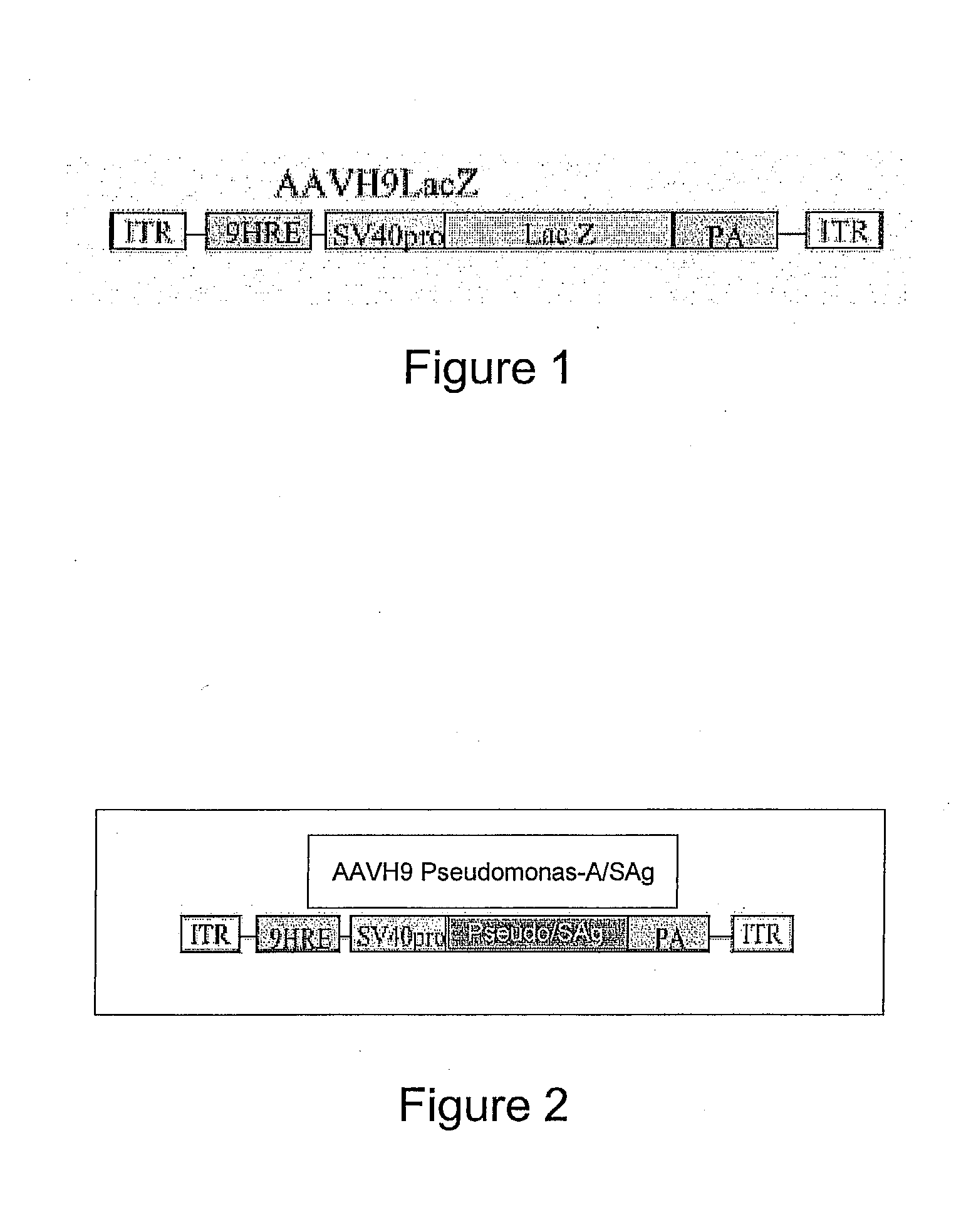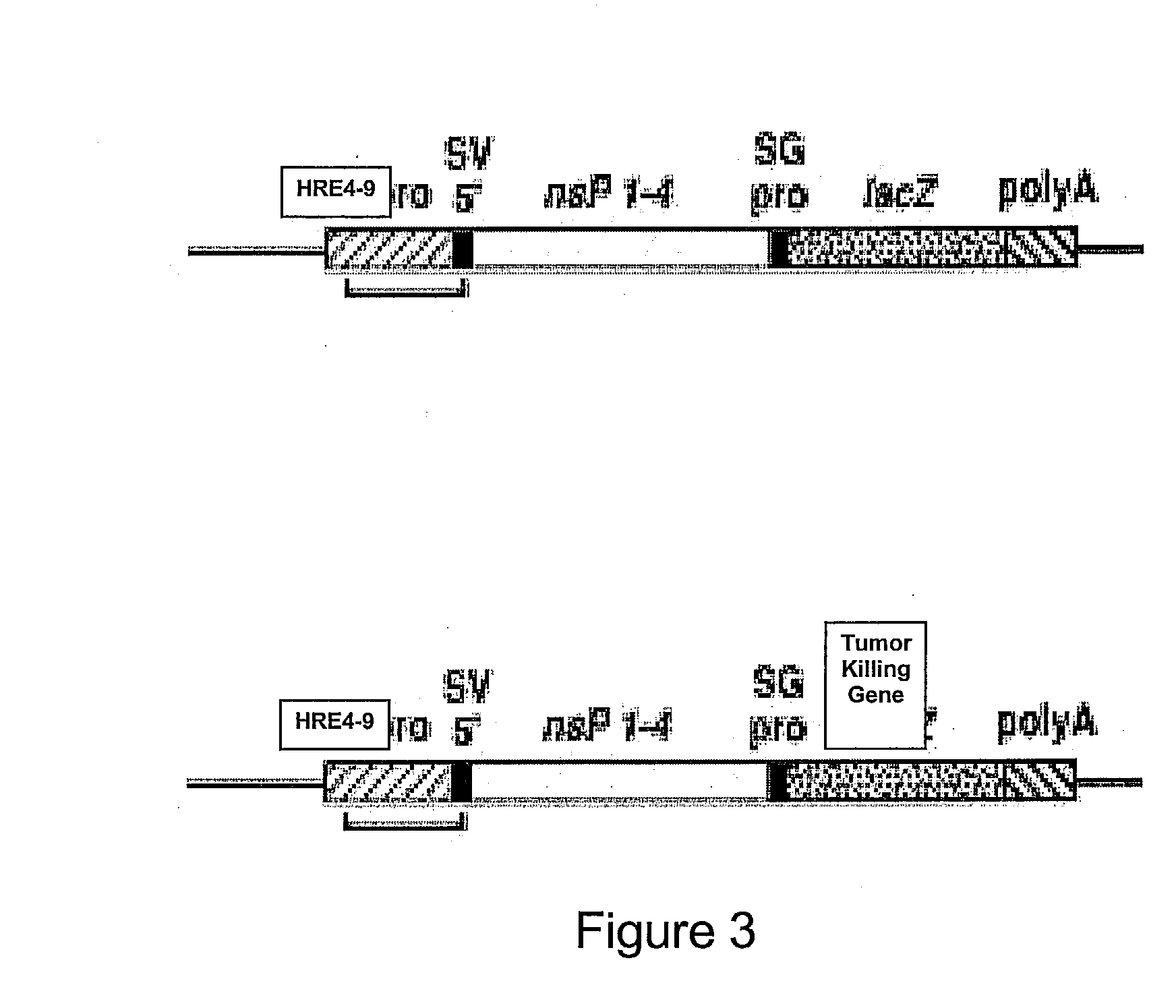Sickled Erythrocytes, Nucleated Precursors & Erythroleukemia Cells for Targeted Delivery of Oncolytic Viruses, Anti-tumor Proteins, Plasmids, Toxins, Hemolysins & Chemotherapy
a technology of erythrocytes and precursors, applied in the field of genetics and medicine, can solve the problems of reducing the effect of chemotherapy on the survival rate of patients with non-small cell lung cancer, reducing the effect of chemotherapy on the survival rate of patients, and reducing the effect of chemotherapy
- Summary
- Abstract
- Description
- Claims
- Application Information
AI Technical Summary
Benefits of technology
Problems solved by technology
Method used
Image
Examples
example 1
[0350]Examples 1 and 2 are cumulative disclosures from U.S. Ser. No. 09 / 751,708, U.S. 60 / 438,686, U.S. 60 / 415,310, U.S. 60 / 406,750, U.S. 60 / 415,400, U.S. 60 / 406,697, U.S. 60 / 389,366, U.S. 60 / 378,988, U.S. Ser. No. 09 / 870,759 which are incorporated by reference and their references in their entirety.
Sickled Erythrocytes as Carriers of Tumoricidal Agents.
[0351]Sickled erythrocytes are known to be more adherent to microvascular endothelium than normal erythrocytes and to adhere to a greater extent under conditions of local hypoxia and acidosis. The primary pathologic defect in sickle cell disease is the abnormal tendency of hemoglobin S to polymerize under hypoxic conditions. The polymerization of deoxygenated hemoglobin S results in a distortion of the shape of the red cell and marked decrease in its deformability. These rigid cells are responsible for the vaso-occlusive phenomena which are the hallmark of the disease.
[0352]Sickle red cells adhere to the microvascular endothelium for ...
example 2
Vesicles from Sickled Erythrocytes
[0369]Vesicles from sickled erythrocytes are shed from the parent cells. They contain membrane phospholipids which are similar to the parent cells but are depleted of spectrin. They also demonstrate that a shortened Russell's viper venom clotting time by 55% to 70% of control values and become more rigid under acid pH conditions. Rigid sickle cell vesicles induce hypercoagulability, are unable to pass through the splenic circulation from which they are rapidly removed. Sickled erythrocytes are transfected in the nucleated prereticulocyte phase with superantigen and apolipoprotein nucleic acids as well as RGD nucleic acids. Nucleic acids encoding additional polypeptides alone or together with SAg as described in Tables I and II are transfected into and expressed by sickled erythrocytes. Any of the immature or mature sickled erythrocytes and their shed vesicles expressing the molecules given in Tables I and II are capable of localizing to tumor microv...
example 3
[0373]For human studies, SS erythrocytes or nucleated SS erythrocyte precursors are obtained from patients with homozygous S or sickle thalassemia hemoglobin, hemizygous sickle S and A hemoglobin, sickle hemoglobin-C disease, sickle beta plus thalassemia, sickle hemoglobin-D disease, sickle hemoglobin-E disease, homozygous C or C-thalassemia, hemoglobin-C beta plus thalassemia, homozygous E or E-thalassemia. Nucleated erythroleukemia cells are obtained from patients with erythroleukemia. The erythrocytes are ABO- and Rh-matched for compatibility with recipients. The cells are optionally incubated with epinephrine 1×10−2 μM per 108 cells for 2 minutes at 37° C. SS erythroblasts and erythroleukemia cells stably transfected with nucleic acids encoding BCAM / Lu are transfected with oncolytic viruses as described herein. Additional groups of these cell types are rendered drug-resistant by ex vivo exposure to cisplatinum or Adriamycin as described herein. Mature SS cells are loaded with an...
PUM
| Property | Measurement | Unit |
|---|---|---|
| Volume | aaaaa | aaaaa |
| Volume | aaaaa | aaaaa |
| Volume | aaaaa | aaaaa |
Abstract
Description
Claims
Application Information
 Login to View More
Login to View More - R&D
- Intellectual Property
- Life Sciences
- Materials
- Tech Scout
- Unparalleled Data Quality
- Higher Quality Content
- 60% Fewer Hallucinations
Browse by: Latest US Patents, China's latest patents, Technical Efficacy Thesaurus, Application Domain, Technology Topic, Popular Technical Reports.
© 2025 PatSnap. All rights reserved.Legal|Privacy policy|Modern Slavery Act Transparency Statement|Sitemap|About US| Contact US: help@patsnap.com



